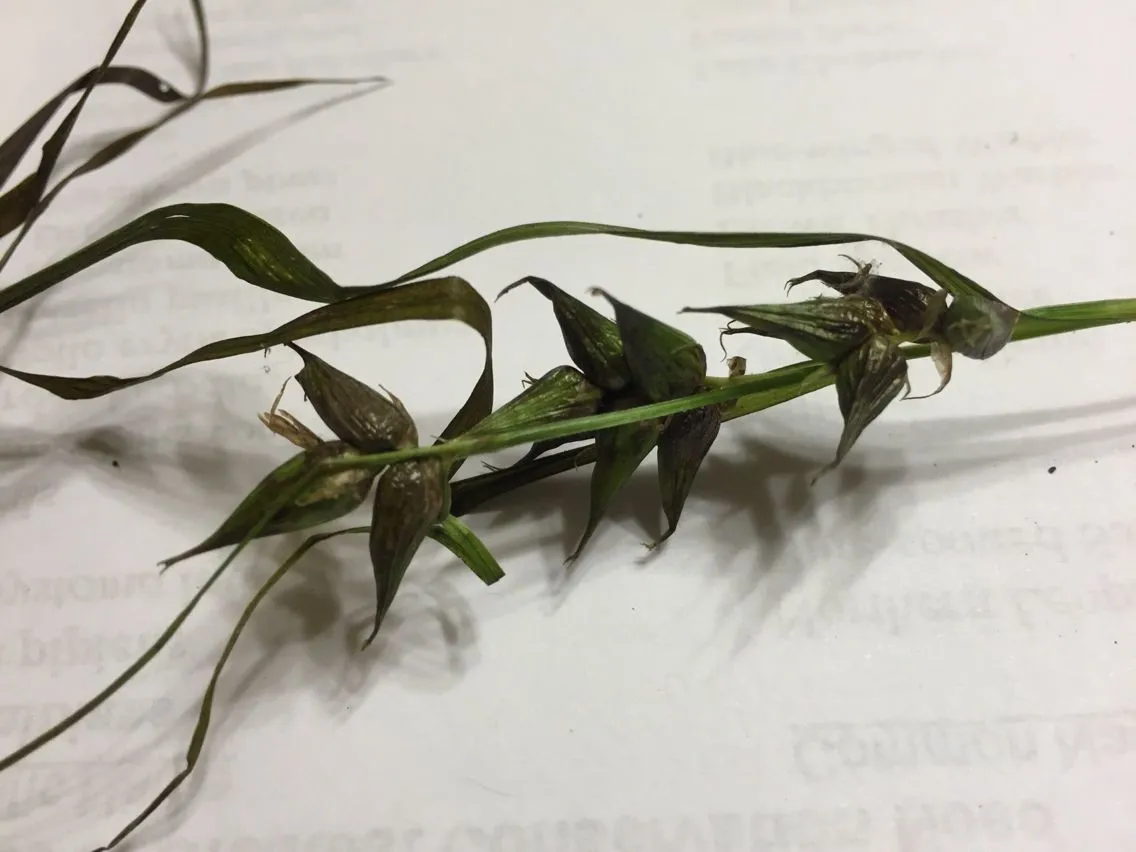
Author: Rudge
Bibliography: Trans. Linn. Soc. London 7: 97 (1804)
Year: 1804
Status: accepted
Rank: species
Genus: Carex
Vegetable: False
Observations: Canada to C. & E. U.S.A.
Carex intumescens, commonly known as Greater bladder sedge, is a notable member of the Cyperaceae family. First described by Rudge in 1804 and published in the Transactions of the Linnean Society of London, Greater bladder sedge is distinguished by its widespread habitat range, stretching from Canada through to central and eastern regions of the United States.
Typically found in wetland areas, this perennial sedge thrives in moist, shaded environments such as forested swamps, marshes, and damp meadows. The plant’s structure is characterized by its erect, tufted growth pattern and its foliage – narrow, grass-like leaves that contribute to its graceful appearance.
One of the most striking features of Carex intumescens is its inflated perigynia, which resemble small, swollen bladders, giving the plant its common name. These balloon-like structures protect the seeds and are a key identification marker. The plant’s stems, or culms, can reach a height of up to 1 meter, supporting the distinctive bladders that appear predominantly green but may develop a brownish hue as they mature.
The growth cycle of Carex intumescens aligns with the seasons, with new growth in spring and early summer, followed by the production of seeds that mature later in the growing season. The sedge’s adaptability to different moisture levels and its resistance to various weather conditions make it a resilient species within its preferred habitat range.
Botanically significant and ecologically valuable, Greater bladder sedge contributes to the biodiversity and stability of wetland ecosystems. It provides habitat and food for various wildlife species, playing a critical role in maintaining the delicate balance of these environments.
For botanists and nature enthusiasts, identifying Carex intumescens in the wild offers an opportunity to appreciate this sedge’s unique adaptations and its role in wetland ecology. Whether observed in the lush forests of Canada or the expansive wetlands of the central and eastern United States, Greater bladder sedge stands as a testament to the intricate beauty and resilience of plant life within the Cyperaceae family.
Eng: greater bladder sedge, bladder sedge, shining bur sedge, swollen sedge
Dan: storfrugtet star
Fra: carex gonflé
Nob: indianerstarr
Nno: indianerstorr
Swe: indianstarr
En: Greater bladder sedge, Swollen sedge, Bladder sedge, Shining bur sedge
Ar: سعادي منتبج
Da: Storfrugtet star
Fi: Intiaanisara
Fr: Carex gonflé
Nb: Indianerstarr
Nn: Indianerstorr
Fa: کارکس ایتومسنس
Sv: Indianstarr
Taken Oct 5, 2022 by Renée-Louise Lamontagne (cc-by-sa)
Taken Nov 13, 2021 by Johnny Poppyseed (cc-by-sa)
Taken Jun 20, 2022 by Renée-Louise Lamontagne (cc-by-sa)
Taken Jun 1, 2015 by Jacques Ranger (cc-by-sa)
Taken Jun 1, 2015 by Jacques Ranger (cc-by-sa)
Taken May 31, 2020 by Than Angell (cc-by-sa)
Taken Sep 27, 2020 by epm2015 (cc-by-sa)
Taken Nov 16, 2015 by EOL − Jean-François Roch (cc-by-nc)
Taken Jun 16, 2014 by EOL − Killarney Provincial Park (cc-by-nc)
Taken Jul 25, 2022 by Marianne Joubert (cc-by-sa)
Taken Jul 10, 2015 by EOL − Ben VanderWeide (cc-by-nc)
Taken Jul 23, 2015 by EOL − Clayton D’Orsay (cc-by-nc)
Taken Jun 17, 2015 by EOL − benconnorbarrie (cc-by-nc)
Taken May 31, 2015 by EOL − Charlie Hohn (cc-by-nc)
Taken Jun 7, 2015 by EOL − Clare Dellwo Cole (cc-by-nc)
Taken Jul 9, 2022 by Helen (cc-by-sa)
Taken Oct 20, 2021 by Pascal Guerin (cc-by-sa)
Taken Jun 18, 2020 by Nathalie Gauthier (cc-by-sa)
Taken Jun 27, 2020 by Dan Hunt (cc-by-sa)
Taken Jun 1, 2015 by Jacques Ranger (cc-by-sa)
Taken Jul 15, 2015 by EOL − Joe Walewski (cc-by-nc)
Taken Jun 4, 2015 by EOL − Liana May (cc-by-nc-sa)
© copyright of the Board of Trustees of the Royal Botanic Gardens, Kew.
Growth form: Bunch
Growth habit: Graminoid
Growth rate: Moderate
Ph maximum: 6.9
Ph minimum: 4.8
Family: Myrtaceae Author: (F.Muell.) K.D.Hill & L.A.S.Johnson Bibliography: Telopea 6: 402 (1995) Year: 1995 Status:…
Family: Rubiaceae Author: Pierre ex A.Froehner Bibliography: Notizbl. Bot. Gart. Berlin-Dahlem 1: 237 (1897) Year:…
Family: Sapindaceae Author: Koidz. Bibliography: J. Coll. Sci. Imp. Univ. Tokyo 32(1): 38 (1911) Year:…
Family: Asteraceae Author: A.Gray Bibliography: Pacif. Railr. Rep.: 107 (1857) Year: 1857 Status: accepted Rank:…
Family: Fabaceae Author: Medik. Bibliography: Vorles. Churpfälz. Phys.-Ökon. Ges. 2: 398 (1787) Year: 1787 Status:…
Family: Aspleniaceae Author: (Cav.) Alston Bibliography: Bull. Misc. Inform. Kew 1932: 309 (1932) Year: 1932…